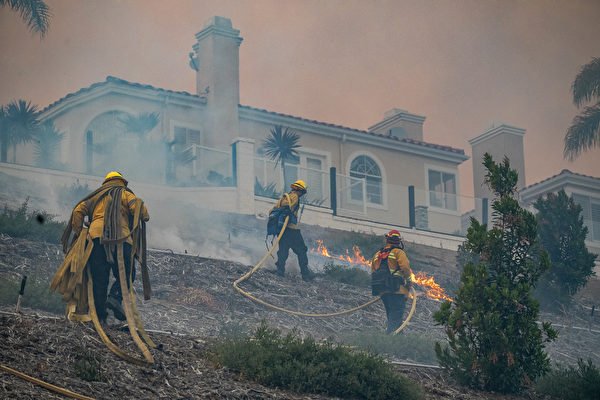In July, wildfires have once again ravaged the western and midwestern United States, producing large amounts of smoke. A new study shows that the health costs of inhaling wildfire smoke can be significant, even leading to death.
Recently, a group of scientists attempted to quantify the long-term effects of California wildfire smoke from 2008 to 2018. Their research modeled the state-wide levels of tiny particles known as PM2.5 in wildfire smoke. They estimated that as many as 55,710 premature deaths could be attributed to wildfire-related PM2.5 in the air.
Around 90% of wildfire smoke is made up of PM2.5 particles with a diameter of 2.5 micrometers, which are 20-30 times smaller than a human hair. Once inhaled, PM2.5 particles are engulfed and cleared by macrophages in the body’s immune system, but not completely.
Some residual PM2.5 particles can penetrate deep into the lungs, some may deposit in the lungs, while others can enter the bloodstream through lung capillaries, causing various symptoms ranging from inflammation, asthma attacks to sudden cardiac arrest. Complete clearance by the body is unlikely.
In 2023, wildfire smoke blanketed large areas of the United States, including cities like New York that rarely see smoky conditions.
Thousands of people in the United States die each year as a result of wildfire smoke.
Although this premature death study was focused on California, wildfires can generate smoke that drifts thousands of miles, putting unaware individuals at risk, especially those with certain health conditions who face greater risks.
Here are some key points you need to know and guidance for high-risk populations.
If you hear news of wildfires or see hazy skies, check the Air Quality Index (AQI) on AirNow.gov or PurpleAir.com.
The AQI is an air quality indicator derived from the concentration values of six main pollutants – fine particulate matter (PM2.5), particulate matter, sulfur dioxide, nitrogen dioxide, carbon monoxide, and ozone – obtained from meteorological monitoring.
If the AQI is above 100, avoid outdoor activities. When it exceeds 150, wear an N95 mask outdoors. Use air conditioning with high-efficiency filters or portable HEPA air purifiers.
For those in high-risk groups, consider taking additional precautions. Some experts suggest setting up a designated “clean room,” keeping doors and windows closed, and using portable HEPA air purifiers. Avoid indoor vacuuming, lighting candles, or using gas stoves as they can increase indoor air pollution. Adjusting windows and doors to minimize ventilation is also a good idea.
When air quality is poor, schedule outdoor activities during times of lower AQI readings and consult with a medical professional on how to protect yourself. If possible, relocate to areas outside the smoky region.
“Pregnancy increases your respiratory rate, so you inhale more smoke,” Dr. Amy Padula, Associate Professor of Obstetrics and Gynecology at the University of California, San Francisco, told National Public Radio. “PM2.5 can enter the bloodstream and reach the placenta, potentially affecting the fetus.”
In a study published earlier this year, she and her colleagues found that exposure to PM2.5 in wildfire smoke during pregnancy was associated with an increased risk of preterm birth. Preterm babies are more likely to have immature lungs and delayed development, and they are also more likely to die within the first year.
Children inhaling PM2.5 can harm their developing lungs. Dr. Lisa Patel, a member of the American Academy of Pediatrics Committee on Environmental Health and Climate Change, stated: “Lungs grow rapidly from birth until around age five, and continue developing into your twenties. Early exposure to wildfire smoke can lead to asthma development and exacerbation, as well as childhood pneumonia.”
A 2021 study found that PM2.5 associated with wildfires poses ten times the risk to children’s respiratory health compared to PM2.5 from other sources (like air pollution). Exposure to these fine particles is also linked to increased risks of ADHD, autism, and poor academic performance.
Elderly individuals are more likely to suffer from high blood pressure, heart problems, and other diseases, making them more susceptible to the toxic effects of wildfire smoke. A study published in the Journal of the American Heart Association in 2018 found that individuals over 65 were more likely to visit the emergency room for a range of cardiovascular issues on smoky days or days following wildfires, including heart attacks, arrhythmias, pulmonary embolisms, and stroke. The study indicated that elderly women and African Americans may be particularly prone to respiratory issues in wildfire smoke exposure.
Millions of outdoor workers such as farm workers, construction workers, and gardeners engage in high-intensity physical labor, inhaling more PM2.5. Oregon, California, and Washington have passed regulations requiring employers to limit employees’ exposure to smoke, including providing N95 masks.

